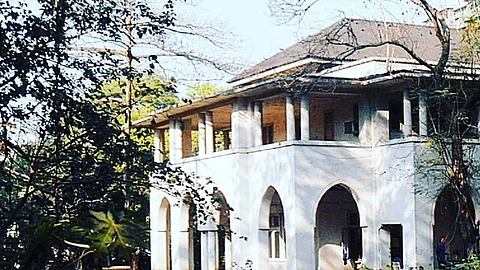

Jinnah House, more commonly referred to as South Court Mansion, is a historically significant bungalow constructed by the founder of Pakistan, Mohammad Ali Jinnah, in 1936. Nestled on the picturesque Malabar Hill in Mumbai, this iconic structure embodies colonial architectural elegance and cultural heritage. Currently, the bungalow is poised for an extensive restoration project aimed at preserving its historical value while adapting it for modern use.
Spanning 2.5 acres, this heritage site is awaiting final clearance from the Ministry of External Affairs (MEA), which proposes to transform the estate into a diplomatic enclave.
In August 2023, the Mumbai Heritage Conservation Committee (MHCC) granted approval for the restoration of Jinnah House, officially categorised as a Grade II A heritage site. The MEA has entrusted this project to the Central Public Works Department (CPWD), which has appointed Sir JJ College of Architecture as project consultant, bringing together expertise in both heritage conservation and modern architecture.
The restoration plans involve a series of alterations designed to enhance the property's historical integrity while ensuring its functionality. Proposed changes include the reconstruction of the grand front staircase and repairs to the existing doors and windows. Additionally, particular attention will be given to restoring distinctive features such as chandeliers and original furniture, which are integral to the bungalow's character.
Jinnah House, also known as South Court Mansion, was once the cherished home of Muhammad Ali Jinnah. It was built after Jinnah returned to Bombay from England to take charge of the Muslim League. This elegant villa, which includes a ground floor and one upper storey, was constructed in 1936 on 2.5 acres of land located on Mount Pleasant Road, now called Bhausaheb Hirey Marg in Malabar Hill. The stunning house features exquisite Italian marble work and was built at a cost of 2 lakh rupees.
Jinnah House was crafted under the artistic vision of Claude Batley, a distinguished British architect who made India his home in the 1930s. Batley was celebrated for his mastery of the Art Deco and Indo Deco architectural styles, both of which are beautifully embodied in Jinnah House. The building features grandiose proportions and elegant design elements that have allowed it to stand the test of time, still offering stunning views of the Arabian Sea. During the period of its construction, Batley held the prestigious position of head of the architecture department at the JJ School of Arts in Mumbai, where he shaped the talents of many young architects.
The actual construction of Jinnah House was executed by skilled Italian stonemasons, whose craftsmanship is evident in the intricate details of the façade. Jinnah was known for his meticulous attention to detail and personally supervised the project, ensuring that every aspect of the design met his exacting standards. This combination of Batley's innovative design and Jinnah's hands-on involvement has resulted in a residence that is not only architecturally significant but also rich in historical context.
Jinnah resided in the house for a decade, from 1936 until his migration to Karachi in 1947, marking a significant period in both his life and the history of India. After his departure, in 1949, the Bombay government requisitioned Jinnah House, which was then allotted to the Deputy High Commissioner of the United Kingdom, a move that reflected the political changes of the time.
Not only is Jinnah House an architectural marvel, but it also holds immense historical significance as a venue for crucial discussions surrounding the Partition of India. It was here that key figures such as Jinnah, Mahatma Gandhi, and Jawaharlal Nehru engaged in pivotal meetings, shaping the future of the subcontinent. Today, Jinnah House stands as a powerful symbol of an era of transformation, embodying both the aspirations and complexities of India's struggle for independence.
